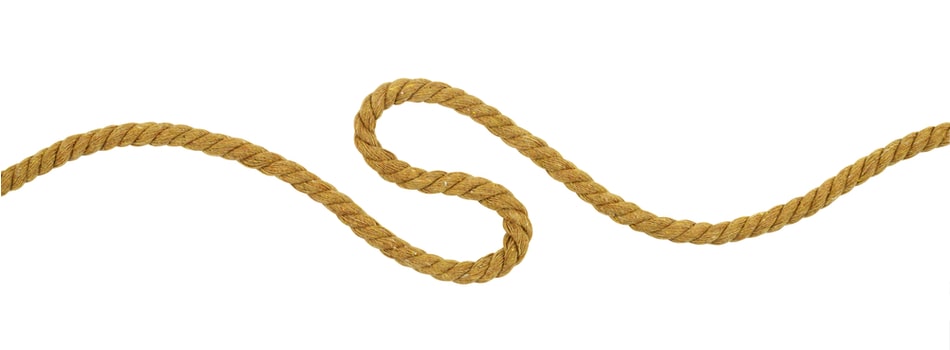I’ve noticed a trend in recent years in that when businesses want to check their distribution networks or design a distribution network, they immediately jump into loads and loads of detail.

Maybe it’s because the tools are out there to do it now, but I’d like to highlight other approaches that are less time-consuming and resource-hungry.
Four Ways to Streamline Your Network Design
I’ve been doing network design for all of 25 years. We did it all on spreadsheets in the early days because there were no specialist tools around. Now there are great tools, such as Supply Chain Guru and others.
But let’s wind the clock back a bit and look at some of the simple ways that network design can work before focusing on the more complex models.
1. The Back-of-the-Envelope Approach
There are some fairly simple back-of-the-envelope approaches that you could take. You could do these on a simple spreadsheet or even a whiteboard.

Let’s imagine that you’re operating in Australia, which is rather awkward for distribution because most of the population lives on the east coast and about 7% lives way over on the west coast.

People who are new to the country say, why can’t we just have one national warehouse? The problem is, it takes three or four days to traverse from coast to coast. For that reason, companies will usually establish one warehouse on the east coast and another on the west coast, depending, of course, on the service offer.
Bring in the Whiteboard
How would you do a rough check on a whiteboard? You might look at your existing costs with an east coast warehouse and then, very simply, you could compare the added cost for a west coast warehouse.
You might ask the following questions:
- What’s the total amount of product we may have to move across the country?
- What’s the transport rate to move it?
- What’s the extra line haul or trunking cost?
We need to factor all of that in when comparing what it costs to serve customers directly from the east coast. So you have to look at the line haul cost against the added cost of setting up a warehouse in the west. That’s a simple back-of-the-envelope approach. You don’t need to do a months-long study with specialist tools to work that one out.
2. Spreadsheet Models

Some 20 years ago, we used to build some very complex models on spreadsheets using Visual Basic and other programmes.
You can do a lot on spreadsheets, such as testing transport rates and volumes and testing different volumes going through different lanes, with a fair degree of accuracy.
3. Specialist Tools

These days there are many specialist models out there, including Supply Chain Guru by Llamasoft—the one that we use.
You can use these specialist tools at different levels. You don’t have to launch into something very data-intensive.
For example, you could set up generic transport rates, whether that be cost per pallet, tonne, unit, or kilometre. You could then use that to test the various warehouses in the network and have a look at the influence of transport costs.
You could do the same with warehouse costs. You could have some fixed and variable costs set up in the model that are the same for each state. Then you could test different numbers of warehouses to see how that impacts the overall cost.
You could do the same with inventory levels and specific service offers to see how they compare. This practice of using generic rates could give you a quick indication of whether you should have one, two, four, five, six, or ten warehouses.
4. Detailed Study
Most of the work we do with clients begins with the back-of-the-envelope model but then we move on to specialised programmes to conduct detailed studies.
For instance, we might look at individual demand by customer or postcode. We might do modelling by SKUs, or more generally by product group family. We would set up transport costs by transport lanes and then look at the line haul or trunking costs and the delivery costs, comparing those of serving metro customers versus regional customers.
We often find it necessary to calculate individual distribution centre rates, too, because the costs of the land, the building, and labour differ from city to city, as well as from city to regional area.
If you want a really robust analysis that compares this distribution network with that distribution network, that’s when you need to adopt this kind of very detailed approach.
So, How long DOES it take to Design a Network?

This is a bit like asking, ‘how long is a piece of string?’ Basically, it can take as long as you want it to take—from a day to three or four months, depending on the method you choose and the degree of complexity and accuracy you want.
Let’s take a look at each of our aforementioned approaches in turn:
1. The Back-of-the-Envelope Method
Using a whiteboard or a spreadsheet, you could probably complete this procedure in a day. It is very rough and ready, of course, but it will serve to give you a sense of whether something is going to work or not.
2. The Spreadsheet Method
This method is a little more complicated but you could probably do it in a week.
3. The Specialist Tools Method
Even a very simple model is going to take three to four weeks because an important part of this method is making sure that we understand the current cost and service parameters of the business. We have to set up the model to replicate this before we can start modelling alternatives.
4. The Detailed Study Method

This involves gathering a lot of details. The amount of time spent on the study depends on the complexity of the business and the quality of the data. If the data is good, it’s probably a three-to-four-month project.
It all Comes Down to Your Accuracy Requirements
If you want to go to the board and say we’re going to save $25 million but we have to spend $12 million, you need the detail and the accuracy. But if someone says to you, ‘Hey, is it worth setting up a warehouse in Perth?’—you could probably do that on the back of an envelope.
If you found this article valuable, you will be happy to know that we cover all the intricacies of distribution networks and warehousing in a bunch of videos posted to our Supply Chain Secrets YouTube channel, including the video on which this article is based.
And while I’m at it, I’m going to urge you to subscribe to the channel. It costs nothing, and we serve up a new offering every week. You’ve nothing to lose by subscribing—and that’s one conclusion that you won’t even need the back of an envelope to arrive at.
Editor’s Note: This post was originally published on April 13, 2021, under the title “The Long and Short of Designing a Distribution Network” on Logistics Bureau’s website.


